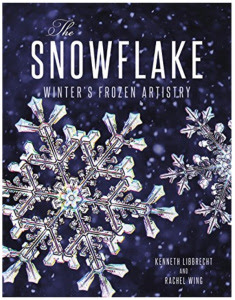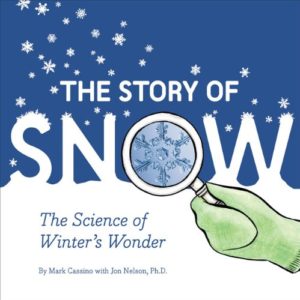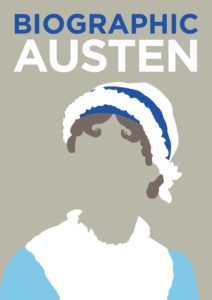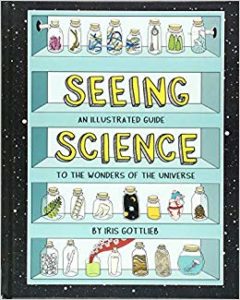A Trio of Oceanic Fun for All Ages
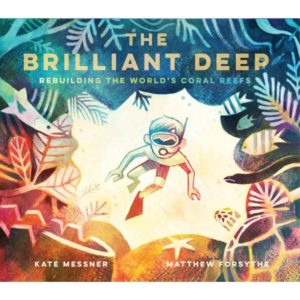
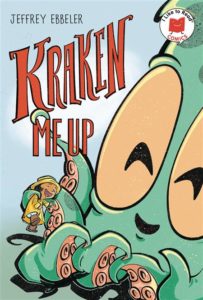
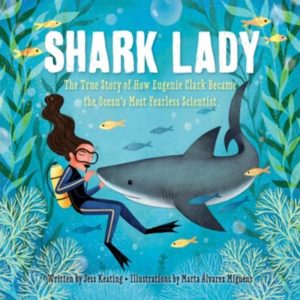
The Brilliant Deep: Rebuilding the World’s Coral Reefs by Kate Messner, illustrated by Matthew Forsythe
Kraken Me Up by Jeffrey Ebbeler
Shark Lady: The True Story of How Eugenie Clark Became the Ocean’s Most Fearless Scientist by Jess Keating, illustrated by Marta Alvarez Miguens
This year’s summer reading theme is “Oceans of Possibilities”, and it is loads of fun! Whether it’s the great activities or whimsical decor or the nifty reading challenges, there’s something for everyone here at the Joplin Public Library!
As a longtime fan of seafaring novels and fly fishing nonfiction (L.A. Meyer’s Bloody Jack series, the Master and Commander series by Patrick O’Brian, ocean fishing accounts by Thomas McGuane and Randy Wayne White, to name a few), I’ve loved this summer’s deep dive into books about waterways, sea life, and boat travel. I’m excited to share a trio of gorgeously illustrated children’s books with all-ages appeal that tie into the summer reading theme. I accessed electronic versions of these titles through the Libby app offered by the Library.
First up is the hilarious Kraken Me Up by Jeffrey Ebbeler. A graphic novel for early readers, it employs expanded visual supports to strengthen reading comprehension. With a mix of traditional comics panels and two-page spreads, the layout invites readers into the charming story of a little girl and her pet sea monster. There’s a pet show at the county fair, and you can see where that’s headed…
Kraken Me Up is a story of acceptance and understanding peppered with visual jokes in squid ink. Our mackintosh-clad heroine convinces her fellow contestants that there is more to each of us than assumptions based on outward appearances. The kraken’s huge eyes reflect its equally large emotions, including devotion to its tiny friend and sorrow at being misunderstood. Author/illustrator Ebbeler uses digital art to great effect adding nuance to accessible vocabulary for budding readers. Kraken Me Up is also available at the Library in print format.
Next up is a picture book biography of an unsung zoologist and shark specialist. Shark Lady: The True Story of How Eugenie Clark Became the Ocean’s Most Fearless Scientist, written by Jess Keating and illustrated by Marta Alvarez Miguens, also tells a story of understanding as well as persistence. At a time when few women entered STEM fields, Eugenie Clark followed her lifelong interest in sharks (a misunderstood species in her opinion) to a career as research scientist advocating for them. She was the first to train sharks as well as to study caves of still, resting sharks (debunking the myth that they must keep moving to stay alive). Clark was a prolific author who also developed a shark repellent and explored the ocean through scuba and submersible dives.
Jess Keating conveys the facts of Clark’s life and highlights her tenacity with language that is accessible to young readers while creating vivid imagery, “Eugenie’s notebooks filled with sharks. They swam in her daydreams and on the margins of her pages.” Keating adds engaging, helpful sections after the main story. “Shark Bites” introduces nifty facts about the creatures in a colorful, two-page spread sprinkled with accent illustrations while “Eugenie Clark Timeline” offers a similar treatment of the scientist’s career. Throughout the book, Marta Alvarez Miguens masterfully uses color to create a little girl’s dream come true. From young Eugenie at an aquarium imagining herself to be one of the fish to adult Professor Clark studying sharks in their natural habitat, Alvarez Miguens brings them alive with vibrant hues conveying both motion and emotion as clearly as if readers were inside the pictures. Shark Lady is also available at the Library as an animated story on DVD.
A book that I would love to see as an animated story is The Brilliant Deep: Rebuilding the World’s Coral Reefs, written by Kate Messner and illustrated by Matthew Forsythe. A nonfiction title that looks and reads like a picture book, it packages information about coral reef restoration in absolutely stunning artwork.
Ken Nedimyer’s love of the ocean began as a child watching Jacques Cousteau on TV and snorkeling along the coral reefs of the Florida Keys. He studied biology and, as an adult, worked in aquaculture operating a live rock farm where rocks are placed on the ocean floor to provide habitat for mollusks, algae, sponges, and other invertebrates. While working with the live rocks, he noticed that portions of the coral were bleached and devoid of fish and sea urchins. A coral colony near the live rock farm spawned, leading to a growth of coral on it. Ken attached pieces of the new coral to various rocks producing more coral colonies. He eventually started a volunteer group, the Coral Restoration Foundation, to plant the new colonies on reefs around the Keys. The foundation now has an international scope.
Author Kate Messner’s concise, straightforward language incorporates relatable concepts such as describing attaching coral “with a careful dab of epoxy–just the size of a Hershey’s Kiss” or sea urchins as “the gardeners of the reef, tiny groundskeepers who control the algae”. Messner concludes her book with useful resources about coral reef death and restoration plus an immensely helpful illustrated glossary of coral reef structures. Messner’s text creates mental images that are the foundation for the gorgeous art of Matthew Forsythe who opens The Brilliant Deep with a mind-blowing two-page spread of pink and turquoise sea turtles, fishes, and sea stars swimming toward a tiny coral in the distance, haloed by white, resting underneath the words, “It starts with one.” Each page that follows is a treat of color and composition. Deep green ocean flanked with schools of fish and a crab peeking out in the foreground sparkles with a stream of multicolored gametes floating from a reef. A young Nedimyer glows green in the light of rows of fish tanks so lively you can almost hear their hum. Volunteer divers swirl upward through shifting blue as they hang coral on underwater “trees” of metal bars; Forsythe expertly uses texture to create their motion along with that of the water and fish surrounding them. The closing spread ends with the same words as the first, this time printed out on the bay where an older Ken Nedimyer looks out with hope to a yellow-pink sea and sky. Grab this book now and see the brilliant art for yourself!
I hope you have a chance to find these and other amazing ocean titles at the Joplin Public Library this summer! Happy reading!


